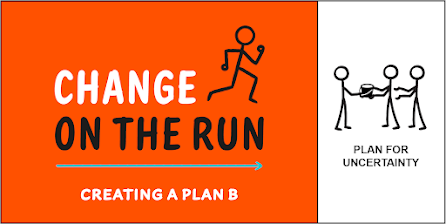This post's podcast episode is available at Sounder, Apple Podcasts, Google Podcasts, Stitcher and Spotify.
When you are short of time, here is the one action that will give you 80 percent results in 20 percent of the time.
DO THIS
Define your next best option.
BY DOING THIS
– Agree on what is the best response if Plan A doesn’t work.
– Map the steps to take if a serious risk materializes.
– Review Plan B with people who have a role to play.
“Always have a backup plan (a ‘Plan B’),” is a good rule to follow for all important activities. Most plans don’t go as intended because there are too many variables to predict. Variances can cause delays, extra costs and compromised credibility.
A good Plan B manages the impacts of things not going as intended. Thinking through what could go wrong and the best response to them will avoid major disruption from unanticipated events. Ask people who have roles in Plan A how they would operate if a specific risk materialized. The answers will identify the actions that form your Plan B. For each action, record when it happens and who is responsible. Review the steps with everyone so people will know what happens immediately before and after their actions.
KNOWLEDGE BITES
Communicate what event will trigger the backup plan so everyone is clear on when it is in effect.
The Creating a Plan B podcast episode with business and market development expert David Smyth.
Phil Buckley is the author of Change on the Run and Change with Confidence, host of the Change on the Run podcast, and co-creator of the Sharing Change with Confidence Newsletter.
#change #changemanagement #business #transformation #leadership #contingencyplans #podcasts




No comments:
Post a Comment